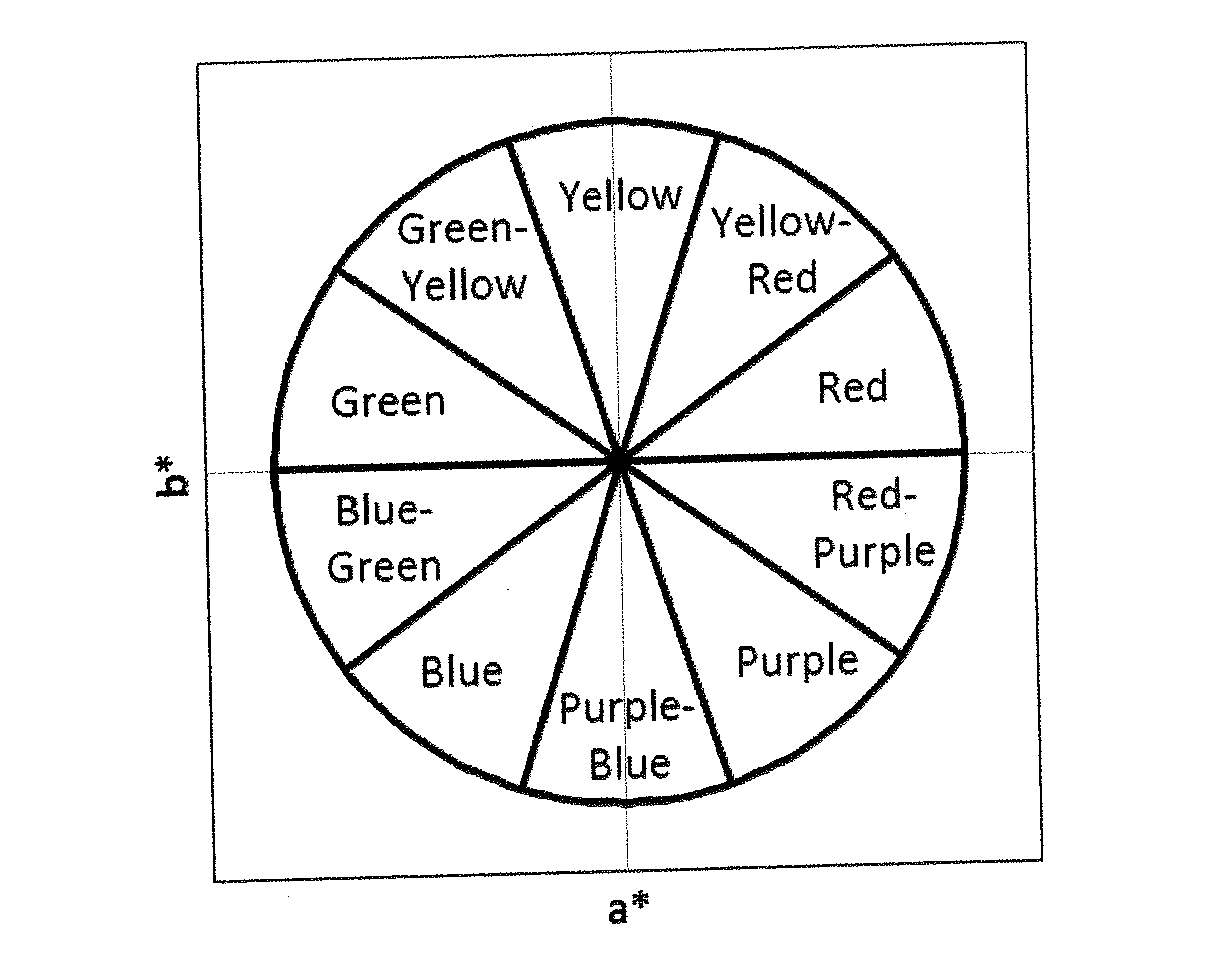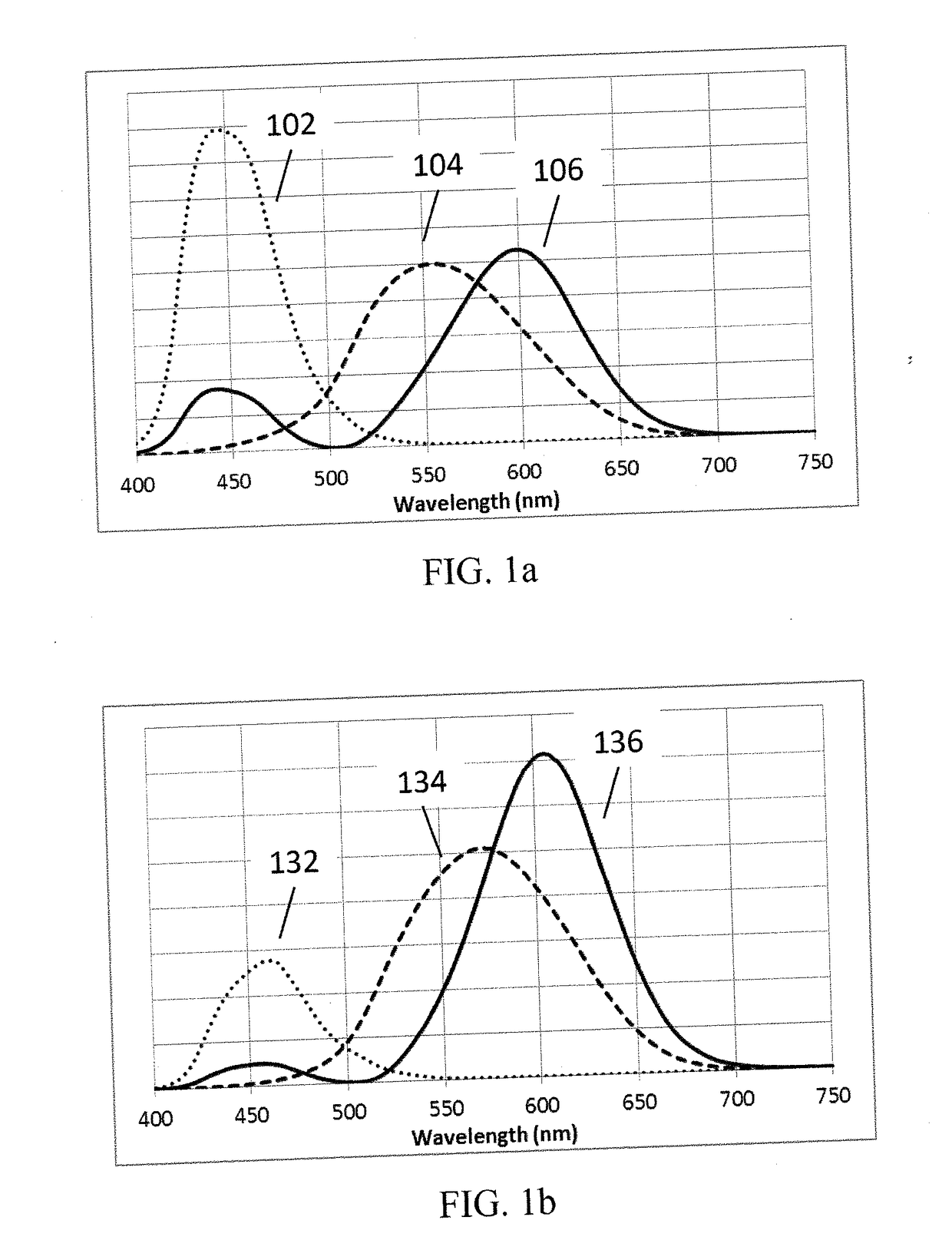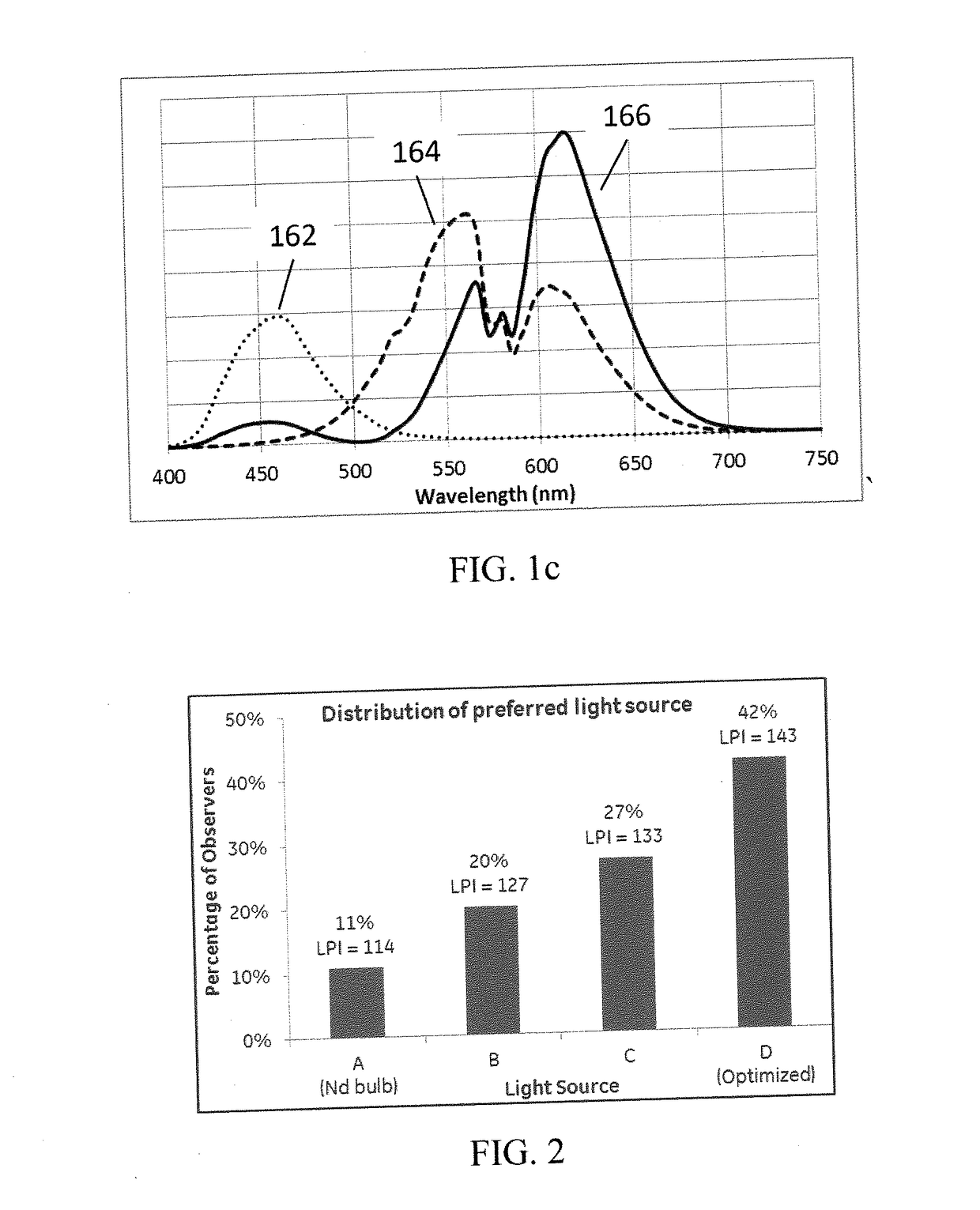Enhanced color-preference LED light sources using yag, nitride, and pfs phosphors
a led light source and color-preference technology, applied in the field of enhanced color-preference led light sources using yag, nitride, and pfs phosphors, can solve the problems of insufficient evaluation and reflection of led products by current metrics, insufficient effectiveness of current metrics, and inability to recognize such enhanced lighting products
- Summary
- Abstract
- Description
- Claims
- Application Information
AI Technical Summary
Benefits of technology
Problems solved by technology
Method used
Image
Examples
first embodiment
[0162]In this second exemplary embodiment, an LPI of about 135 or greater is obtained, so that a human observer may perceive more saturated colors, enhanced whiteness, and a much more preferred color appearance when utilizing the YAG+PFS spectrum 2400 than is possible by using light sources typically having LPI of 120 or less, and only very slightly less so than the first embodiment having LPI of about 137.
[0163]In a third exemplary embodiment of a light source, providing further reduced color preference (LPI) for a YAG+PFS light source than the first and second embodiments, but still exceeding that of the prior art, the peak and dominant wavelengths of the YG YAG:Ce phosphor 2404 in FIG. 24 are shifted to even longer wavelengths than the optimal peak and dominant wavelengths of 531 nm and 559 nm of the first embodiment. In this third exemplary embodiment DomYAG may be as long as about 572 nm, while Duv of the color point lies between about −0.002 and about −0.016, with CCT of about...
fourth embodiment
In this embodiment, an LPI of about 135 or greater is obtained, so that a human observer may perceive more saturated colors, enhanced whiteness, and a much more preferred color appearance when utilizing the YAG+Nit spectrum 2900 than is possible by using light sources typically having LPI of 120 or less, and only very slightly less so than the fourth embodiment having LPI of about 142.
[0167]In a sixth exemplary embodiment of a light source, providing further reduced color preference (LPI) for a YAG+Nit light source than the fourth or fifth embodiments, but still exceeding that of the prior art, the peak and dominant wavelengths of the YG YAG:Ce phosphor 2904 in FIG. 29 are shifted slightly to longer wavelengths than the optimal peak and dominant wavelengths of 531 nm and 559 nm of the fourth embodiment, and the peak wavelength of the nitride red phosphor 2906 in FIG. 29 is shifted to a shorter wavelength than the optimal peak wavelength of 680 nm of the fourth embodiment. In the six...
seventh embodiment
[0172]In this seventh embodiment, an LPI of about 140 to 142 is obtained, so that a human observer may perceive more saturated colors, enhanced whiteness, and a much more preferred color appearance when utilizing the YAG+PFS+Nit spectra 3400, 3700, and 4000 than is possible by using light sources typically having LPI of 120.
[0173]In an eighth exemplary embodiment of a light source, providing slightly reduced color preference (LPI) for a YAG+Nit light source than the seventh embodiment, the peak and dominant wavelengths of the YG YAG:Ce phosphor 3404, 3704, and 4004 in FIGS. 34, 37 and 40 are shifted slightly to longer wavelengths than the optimal peak and dominant wavelengths of 531 nm and 559 nm of the seventh embodiment, and the peak wavelengths of the nitride red phosphor 3408, 3708, and 4008 in FIGS. 34, 37 and 40 are shifted to a shorter wavelength than the optimal peak wavelength of 680 nm of the seventh embodiment. In the eighth embodiment, DomYAG may be as long as about 566 ...
PUM
 Login to View More
Login to View More Abstract
Description
Claims
Application Information
 Login to View More
Login to View More - R&D
- Intellectual Property
- Life Sciences
- Materials
- Tech Scout
- Unparalleled Data Quality
- Higher Quality Content
- 60% Fewer Hallucinations
Browse by: Latest US Patents, China's latest patents, Technical Efficacy Thesaurus, Application Domain, Technology Topic, Popular Technical Reports.
© 2025 PatSnap. All rights reserved.Legal|Privacy policy|Modern Slavery Act Transparency Statement|Sitemap|About US| Contact US: help@patsnap.com



